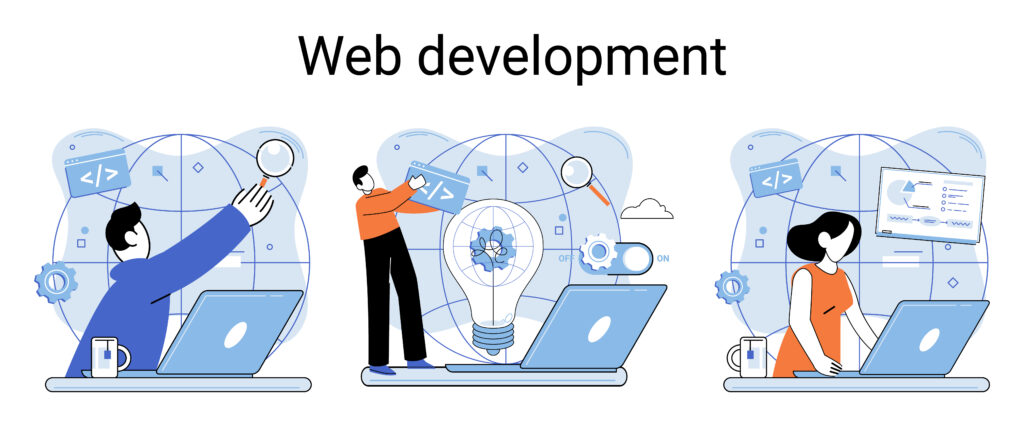What’s New in .NET 7
Microsoft introduces .NET 7 with a focus on providing an STS (standard-term support) version, which offers 18 months of support. This decision aligns with Microsoft’s announcement in 2019 to release a new version of .NET every November.
Despite the shorter support duration, .NET 7 brings a wealth of changes and performance improvements to enhance the user experience.
Features
Let’s explore 17 noteworthy differences between .NET 7 and its predecessor, .NET 6:
- On-stack Replacement (OSR):
This exciting feature allows code execution to switch to a faster version in the middle of a long-running method. OSR empowers developers to optimize performance dynamically during execution.
- Regex Improvements:
.NET 7 introduces various enhancements to regular expressions, making them more efficient and powerful.
- Simplified LINQ Ordering:
LINQ, the language-integrated query feature, receives improvements in .NET 7, simplifying the ordering of query results.
- Dynamic PGO Improvements:
Dynamic Profile-Guided Optimization (PGO) brings significant changes compared to Static PGO. In .NET 7, developers no longer require separate tools for training. By running the application of interest and collecting data, dynamic PGO optimizes performance effortlessly.
- Reflection Improvements:
Microsoft addresses the overhead associated with invoking members using reflection in .NET 7, resulting in considerably reduced execution time.
- Application Trimming Improvements:
.NET 7 introduces the ability to trim unnecessary components from your application, resulting in a smaller executable size and improved performance.
- Trimming Libraries:
In addition to application trimming, .NET 7 allows developers to trim libraries that are not required, further optimizing the application’s footprint.
- Nanoseconds and Microseconds in DateTime:
With enhanced precision, .NET 7 enables more specific values for nanoseconds and microseconds in the DateTime object, providing greater accuracy in time-related operations.
- Memory Caching Improvements:
While specifically targeting ASP.NET, .NET 7 brings improvements to memory caching, enhancing the efficiency and effectiveness of caching mechanisms.
- TAR File Creation:
Building upon the existing ZIP file creation capability in .NET 6, .NET 7 introduces support for creating .TAR files, expanding the range of archive formats available to developers.
- Blazor Changes:
Blazor, Microsoft’s web framework, receives several notable enhancements in .NET 7, including the introduction of blank templates and a sample template without pre-existing data. These improvements streamline development and provide flexibility to developers.
- Improvements to Navigation:
Navigating between pages and components within a Blazor application becomes more seamless and intuitive, enhancing the overall user experience.
- Loading Progress Bar in Blazor Web Assembly:
Visual feedback in the form of a loading progress bar keeps users engaged during the application loading process, improving perceived performance.
- Virtualization Improvements:
Blazor in .NET 7 incorporates virtualization improvements, enabling faster rendering of large datasets and creating a more responsive web experience.
- Passing State:
.NET 7 introduces enhancements to state management in Blazor, simplifying the process of passing and updating state between components.
- Custom Elements Improvements:
Developers can leverage improved custom elements functionality in Blazor, facilitating the creation and utilization of reusable UI components, resulting in cleaner and more modular code.
- Better Performance for .NET MAUI:
.NET Multi-platform App UI (MAUI), the successor to Xamarin.Forms, receives performance improvements in .NET 7. These enhancements ensure faster load times and smoother execution of applications across multiple platforms.
Read also: What is new with Microsoft .NET 7
Differences between .NET 7 vs .NET 6
- LINQ:
.NET 7 introduces enhancements to LINQ that make full use of newer hardware, allowing .NET to process multiple data pieces simultaneously. The result is faster aggregation operations, such as searching the average of an array of 1 million numbers, which runs almost 26 times faster. The performance improvements in LINQ make it a big plus for developers who use it extensively.
- JIT Compilation:
JIT compilation is further optimized in .NET 7 with the use of complex on-stack replacement techniques. This allows the JIT compiler to replace frequently accessed stack values with registers, resulting in faster code execution and more efficient memory use.
- Minimal APIs:
.NET 6 introduced Minimal APIs, a lightweight web framework that allows developers to quickly build HTTP endpoints without the need for a full MVC framework. .NET 7 builds on this feature with additional capabilities and improvements, including endpoint filters, route groups, and typed results, making Minimal APIs even more powerful and efficient for building lightweight web applications.
Read also: What is new in NET 6? [NET 5.0 vs NET 6.0]
How to migrate ASP.NET 6.0 to 7.0
To migrate your project from .NET 6 to .NET 7, follow these step-by-step instructions:
Update global.json:
- Locate the global.json file in your project’s root directory.
- Open the file and find the “sdk” section.
- Update the “version” property to the .NET 7 SDK version that is installed on your machine.
Update Target Framework Moniker (TFM):
- Open your project file (e.g., .csproj or .fsproj) in a text editor.
- Find the <TargetFramework> element within the <PropertyGroup> section.
- Change the target framework value from “net6.0” to “net7.0”.
Update package references:
- Within the project file, locate the <ItemGroup> section that contains package references.
- Update the version attribute for each package reference related to “Microsoft.AspNetCore.”, “Microsoft.EntityFrameworkCore.”, “Microsoft.Extensions.*”, and “System.Net.Http.Json” to “7.0.0” or a later version.
- Remember to save the changes made to the files. After completing these steps, your project should be migrated to target .NET 7.0 and reference the appropriate package versions.
Ensure that you restore packages, rebuild your project, and address any issues that may arise during the migration process.
.NET 7 introduces exciting enhancements that boost performance and efficiency by improving LINQ and JIT compilation. Developers can now achieve faster and more efficient processing capabilities. The introduction of Minimal APIs in web development revolutionizes the way lightweight HTTP endpoints are created, streamlining the development process.
With advanced features in frameworks like Blazor and WPF, developers gain powerful tools to create stunning web and desktop applications. Furthermore, the seamless integration of containerization support and Azure services simplifies the deployment and management of .NET applications in cloud environments.
Embracing .NET 7 empowers developers to unleash their creativity and build cutting-edge, scalable, and modern applications across various domains.












